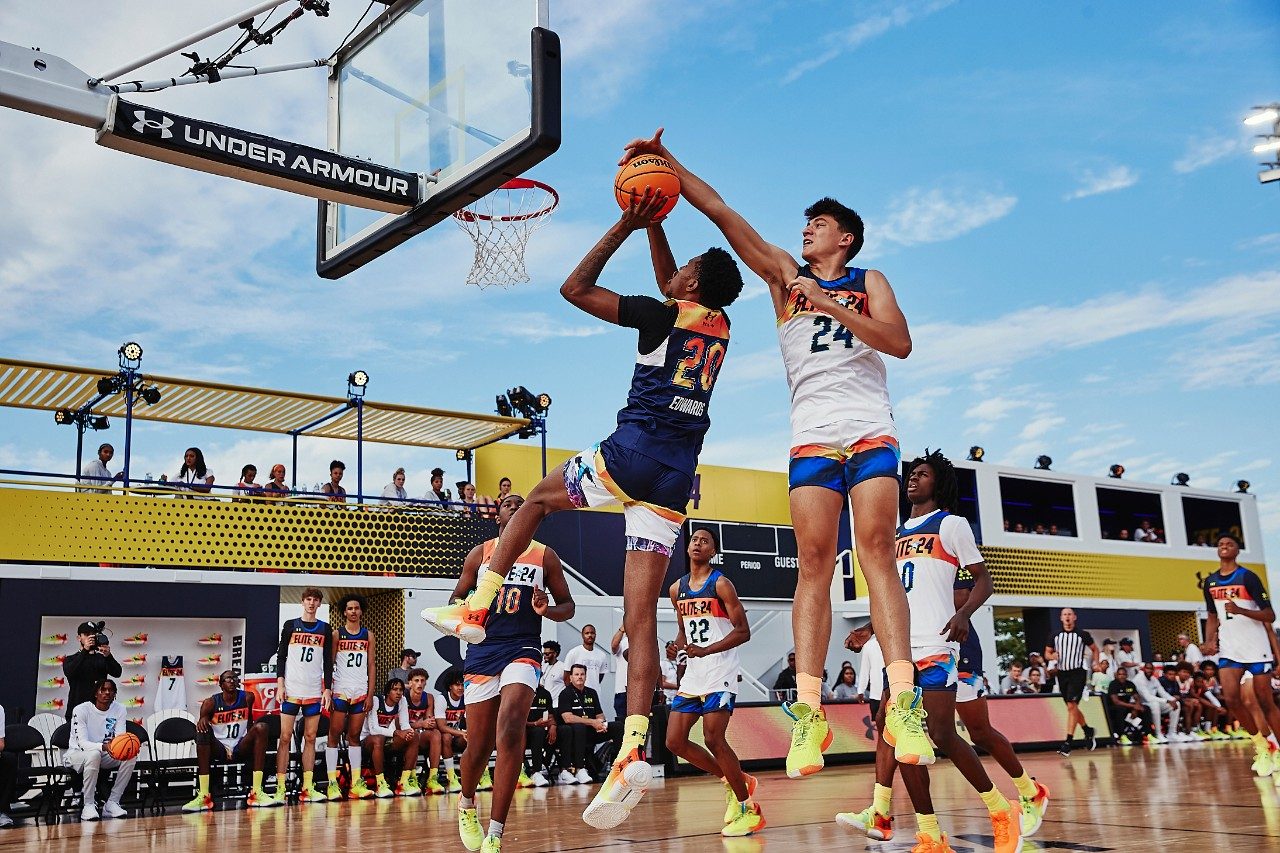On average, a soccer player runs about 7 miles per game, covering a range of distances depending on position and playing style. Soccer’s non-stop nature and constant movement require players to have high levels of endurance and fitness.
The distance covered by players can vary based on their roles on the field. Midfielders and forwards tend to cover more ground as they are involved in both attacking and defensive plays, while defenders typically cover shorter distances. Overall, the physical demands of soccer necessitate players to be in peak condition to meet the rigors of the game.
Understanding The Effort Behind A Soccer Game
Soccer is a physically demanding sport that requires players to cover long distances during a game. The average player runs approximately 7 to 9.5 miles per game, with midfielders covering the most ground. One of the key factors influencing player performance is stamina, which plays a crucial role in maintaining consistent levels of energy throughout the match.
The physical demands of a soccer game are diverse. From explosive sprints and quick turns to continuous jogging and walking, players need to possess a high level of aerobic and anaerobic fitness. This allows them to recover quickly after intense bursts of activity and maintain their endurance over the course of the game.
The role of stamina cannot be underestimated. It enables players to pressurize opponents, make frequent runs into attacking positions, and recover defensively when the team loses possession. Stamina also contributes to mental resilience, helping players stay focused and make accurate decisions, even in the later stages of the game when fatigue sets in.
A well-conditioned soccer player knows the significance of maintaining their stamina levels and works towards regular aerobic and anaerobic training to meet the physical demands of the game.
Factors Influencing The Distance Covered By Soccer Players
Factors influencing the distance covered by soccer players include position-specific requirements, playing style, and team strategy. Different positions in soccer have specific demands in terms of running distances. For instance, midfielders tend to cover the most ground as they contribute both defensively and offensively. Defenders have more of a focus on defensive duties and are often involved in short bursts of high-intensity sprints. Strikers, on the other hand, may cover less distance but are expected to make quick runs into goal-scoring positions.
Playing style and team strategy also play a role in determining the distance covered by soccer players. Teams that prefer possession-based play tend to have players covering shorter distances but with more frequent changes in direction. Conversely, teams that employ a more direct and counter-attacking style may require players to cover longer distances with fewer changes in direction.
Examining The Average Distance Covered By Soccer Players
Soccer players cover a significant amount of ground during a game, with the average distance varying depending on the player’s position and style of play. Research findings show that midfielders tend to cover the greatest distance, averaging between 10-13 kilometers per game. This is attributed to their role in both attacking and defending, requiring them to constantly move across the entire field. Strikers and forwards, on the other hand, cover slightly less ground, typically running around 9-11 kilometers per game. Defenders generally have the lowest average mileage, with around 7-9 kilometers per game, as their primary focus is on maintaining defensive positions rather than constant running.
It’s important to note that these figures are averages and can vary based on individual player fitness levels, team tactics, and the intensity of the game. Additionally, it’s worth acknowledging that specific player attributes such as speed, stamina, and playing style can also influence the distance covered. The demanding nature of soccer requires players to have excellent endurance and the ability to sprint and change direction frequently throughout a match.

Credit: about.underarmour.com
Analyzing The Extent Of Running In A Soccer Game
Analyzing the Extent of Running in a Soccer Game
Tracking player movements is crucial to understanding the distance covered during a soccer game. As the game progresses, players continually transition through various phases – offense, defense, and recovery. During offensive phases, players strategically position themselves to receive passes or make goal-scoring opportunities. These instances require quick sprints, agility, and coordinated movements. In contrast, defensive phases involve marking opponents, intercepting passes, and pressurizing the opposing team. This requires players to cover larger distances, as they must swiftly switch positions to counter the opposition’s attacks.
To gain a comprehensive understanding of player movements, sophisticated tracking systems are employed. These systems utilize wearable technology like GPS trackers or accelerometers, allowing coaches and analysts to measure a player’s speed, distance, and acceleration during a game. It has been observed that an average soccer player can cover anywhere from 7-9 miles during a full 90-minute match. However, it is important to note that this distance can vary depending on factors such as playing position, game tactics, and individual fitness levels.
Unveiling The Impact Of Running On Player Performance
Unveiling the Impact of Running on Player Performance
When it comes to assessing the impact of running on a soccer player’s performance, it is essential to consider the effects on fatigue and performance decline. Running plays a crucial role in the endurance and stamina required for the game. Research suggests that the average soccer player covers a distance of approximately 7 miles during a game, with top-tier professionals surpassing this mark.
Endurance training holds significant importance in a player’s ability to maintain performance levels throughout the match. Running helps build cardiovascular fitness, which enables players to sustain high-intensity efforts over an extended period. It strengthens muscle endurance and improves the body’s capacity to transport oxygen, essential for energy production during the game.
However, excessive running without sufficient recovery time can lead to fatigue, affecting a player’s decision-making, skill execution, and overall performance. Coaches and sports scientists emphasize the importance of balancing training loads and incorporating rest and recovery periods to prevent performance decline.
In conclusion, running is a vital component of a soccer player’s performance. It enhances endurance, stamina, and cardiovascular fitness while also demanding careful management to mitigate the risk of fatigue-induced decline.
Strategies Employed By Soccer Players To Improve Stamina
Strategies employed by soccer players to improve stamina involve incorporating interval training into their training regimens for endurance. Interval training is an effective method for enhancing cardiovascular fitness and increasing the distance covered during a game. This training technique alternates periods of high-intensity exercises with periods of rest or low-intensity activities.
By incorporating interval training into their workouts, soccer players can simulate the physical demands of a game more effectively, as it involves repeated bursts of intense effort followed by brief recovery periods. This type of training not only improves aerobic capacity but also enhances anaerobic performance, allowing players to maintain their energy levels throughout the match.
Moreover, interval training helps soccer players develop mental toughness and resilience, as they push their bodies beyond their comfort zones. By consistently pushing their limits, soccer players can gradually increase their stamina and endurance, enabling them to cover more miles during a game.
The Role Of Nutrition And Hydration In Boosting Stamina
Soccer is a high-intensity sport that requires players to have a great deal of stamina. The average soccer player covers a significant distance during a game, typically running between 7 and 9.5 miles. Proper nutrition and hydration play a crucial role in boosting stamina and ensuring optimal performance on the field.
Proper fueling is essential for soccer players to meet the demands of the game. They should consume a balanced diet that includes a combination of carbohydrates, protein, and healthy fats. Carbohydrates provide the primary source of energy for the muscles, while protein helps with muscle repair and recovery. Healthy fats help maintain overall health and promote satiety.
Hydration is equally important for soccer players. Dehydration can lead to decreased performance, fatigue, and muscle cramps. Players should drink plenty of water throughout the day, especially before, during, and after the game. Sports drinks can also be beneficial, as they provide electrolytes and carbohydrates to replenish energy stores.
To maintain stamina during a game, players should implement hydration strategies. Sip on water or a sports drink during breaks in play, and avoid consuming excessive amounts of caffeine or alcohol, as they can dehydrate the body. It’s also important to listen to your body’s signals and drink whenever you feel thirsty.
Unique Challenges Faced By Professional Soccer Players
Professional soccer players face multiple unique challenges in their careers.
One of the main challenges is balancing physical demands and recovery. Soccer is a physically demanding sport that requires players to run long distances, change direction frequently, and engage in high-intensity sprints. The average distance covered by an elite soccer player in a game is approximately 7 miles. This significant amount of running puts a considerable strain on the players’ bodies, causing fatigue and increasing the risk of injuries.
Another challenge faced by professional soccer players is coping with fixture congestion. Soccer clubs often have a busy schedule with frequent matches, which can lead to fatigue and reduced performance. Players need to find ways to recover and replenish their energy levels between matches. This includes proper nutrition, adequate rest, and following effective training and recovery programs.
| Challenges Faced: |
|---|
| Balancing physical demands and recovery |
| Coping with fixture congestion |
The Future Of Soccer And The Evolution Of Player Stamina
- With the continuous advancements in technology, soccer teams and coaches now have access to a wide range of tools and devices to track and analyze player metrics.
- GPS tracking systems embedded in player jerseys provide real-time data on distance covered, speed, acceleration, and deceleration.
- These metrics help teams and individual players understand their performance and make necessary adjustments to improve their stamina.
Potential changes and adaptations in player stamina requirements:
- As technological innovations continue to shape the future of soccer, player stamina requirements may evolve as well.
- Teams might prioritize players with higher endurance levels and the ability to maintain a high intensity throughout the game.
- Adapting training regimens to focus on stamina development could become even more crucial in the future.
- Coaches may also utilize data-driven approaches to optimize player rotation and substitution strategies, ensuring that players with optimum stamina are on the field at critical moments.
Overall, the future of soccer and the evolution of player stamina are closely tied to the advancements in technology and the ability to track and analyze player metrics.
Frequently Asked Questions Of How Many Miles Does An Average Soccer Player Run In A Game
How Many Miles Do You Run In One Soccer Game?
In a soccer game, players typically run an average of 7 miles.
How Many Miles Do World Cup Players Run In A Game?
World Cup players typically run an average of 7 miles during a game.
How Many Miles Do You Run In A Football Game?
In a football game, players can run an average of 7 miles or more, depending on their position and level of play.
How Much Messi Runs In A Match?
Messi runs an average of about 10 kilometers per match, showcasing his exceptional fitness and work rate on the pitch.
Conclusion
To sum up, an average soccer player covers an impressive distance of approximately 7 miles during a game. This intense level of physical activity showcases the demanding nature of the sport. From sprinting and dribbling to defending and attacking, players exhibit tremendous stamina and endurance.
Understanding the mileage covered by soccer players provides insight into their fitness levels and the amount of effort required to excel in the game. By focusing on fitness and conditioning, players can strive to maximize their performance on the field.

General Manager & Auditorial Head.
Killian Jake is a World Sports Traveler and hobbyist sports lover. By exploring different sorts of playing modules like indoor, outdoor, and many more. As for professionalism and writing, it’s helpful to give you the right suggestions on different games and sports.





